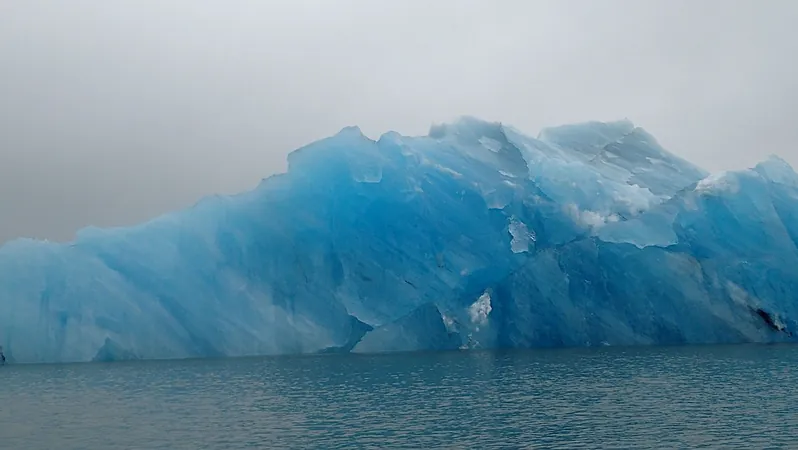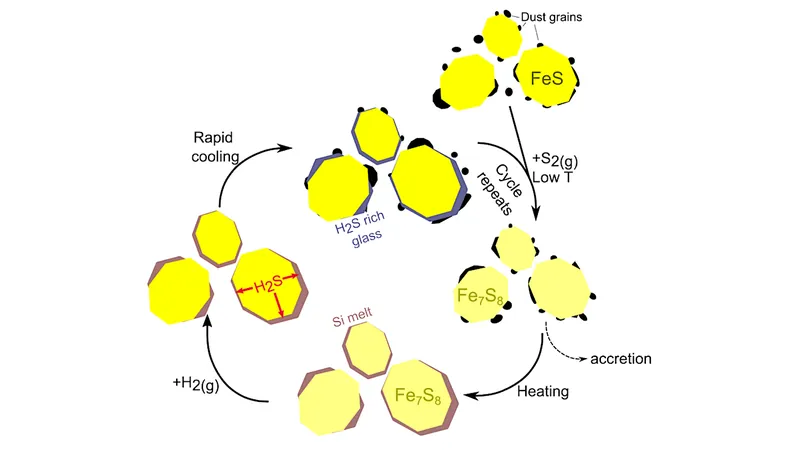
How Ancient Glaciers Reshaped Earth and Fostered Complex Life
2025-04-07
Author: Yu
Recent groundbreaking research from Curtin University has uncovered a stunning revelation: ancient glaciers were not merely ice formations but colossal forces that sculpted the Earth’s surface, ultimately fostering the emergence of complex life forms.
By employing sophisticated chemical analysis on crystal structures found in ancient rocks, scientists have unveiled that as glaciers advanced across the landscape, they acted as tremendous bulldozers. This relentless movement scraped deep into the Earth’s crust, liberating vital minerals that significantly altered the chemical makeup of the oceans.
This phenomenon had a monumental dual impact on Earth’s composition: first, it initiated a cascade effect that modified ocean chemistry; second, it created favorable conditions for the evolution of complex life. Lead researcher Professor Chris Kirkland, affiliated with the Timescales of Mineral Systems Group at Curtin’s Frontier Institute for Geoscience Solutions, emphasized that the study shines a light on the intricate interconnections between Earth’s natural systems.
“When these massive ice sheets defrosted, they unleashed cataclysmic floods that washed essential minerals, including uranium, into the oceans," Professor Kirkland explained. "This surge of chemical elements played a critical role during a pivotal time when more complex life began to develop.”
The study not only sheds light on ancient climate events but also casts a revealing glance at current climate change issues. Professor Kirkland points out that historical shifts in Earth’s climate instigated vast environmental transformations. “This research serves as a crucial reminder that while our planet may endure through cataclysmic changes, the conditions that make it a hospitable home for various life forms can swiftly fluctuate,” he cautioned.
“Understanding these past events is essential for us to predict potential impacts of today’s climate changes on our world,” he added, resonating with the urgency of contemporary environmental discussions.
The collaborative study, which included contributions from the University of Portsmouth and St. Francis Xavier University in Canada, opens new avenues for understanding the complex dynamics of Earth’s geological and biological evolution—reminding us that both natural and anthropogenic environmental shifts carry profound and lasting consequences for life on Earth.
With insights drawn from the past, we hold the key to navigating the present and future challenges posed by our rapidly changing climate.




 Brasil (PT)
Brasil (PT)
 Canada (EN)
Canada (EN)
 Chile (ES)
Chile (ES)
 Česko (CS)
Česko (CS)
 대한민국 (KO)
대한민국 (KO)
 España (ES)
España (ES)
 France (FR)
France (FR)
 Hong Kong (EN)
Hong Kong (EN)
 Italia (IT)
Italia (IT)
 日本 (JA)
日本 (JA)
 Magyarország (HU)
Magyarország (HU)
 Norge (NO)
Norge (NO)
 Polska (PL)
Polska (PL)
 Schweiz (DE)
Schweiz (DE)
 Singapore (EN)
Singapore (EN)
 Sverige (SV)
Sverige (SV)
 Suomi (FI)
Suomi (FI)
 Türkiye (TR)
Türkiye (TR)
 الإمارات العربية المتحدة (AR)
الإمارات العربية المتحدة (AR)